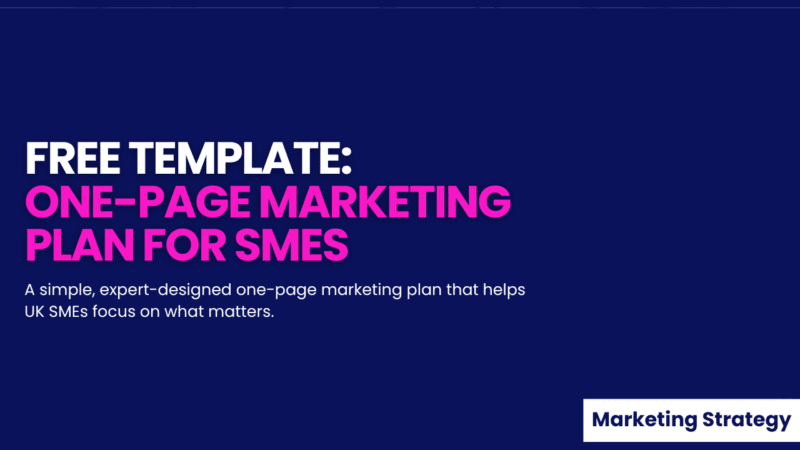
Customer retention is one of the most cost-effective growth strategies for small businesses. As customer acquisition costs continue to rise, SMEs that focus on retaining existing clients see higher profits, stronger relationships, and long-term success.
In this article, I share practical customer retention strategies for B2B businesses looking to boost loyalty, increase repeat sales, and improve overall marketing ROI.B2B client acquisition costs have skyrocketed 60% in five years, with some industries seeing cost per acquisition (CAC) exceed £1,000 per enterprise client.
Acquisition costs continue climbing while businesses obsess over filling their sales pipeline, neglecting the recurring revenue sitting in their existing accounts. This is backwards thinking in a world where B2B relationships span multiple years and involve complex decision-making committees.
Here’s what smart high-growth B2B companies know: account expansion and retention drive sustainable growth.
According to Harvad Business Review 5% increase in customer retention can boost profits by 25% to 95%, but the real impact goes deeper. Customers who stay longer typically expand their contracts, refer new business, and become case study advocates. For companies, retention isn’t just about keeping contracts active. It’s about deepening partnerships that compound in value over time.
Let me walk you through the retention strategies that actually drive measurable account growth.
A 5% increase in customer retention can boost profits by 25% to 95%
Build Account-Based Nurture Campaigns
Most B2B businesses send generic newsletters and wonder why decision-makers don’t engage.
Personalised emails get 29% higher open rates and 14% higher click-through rates. But B2B personalisation means understanding business challenges, not just contact details.
What works: Segment your clients based on company size, industry, contract value, and business maturity. Create different nurture tracks for each segment.
Your enterprise customers need different insights than startups. Your long-term partners want strategic content while newer clients need onboarding support.
Set up automated sequences that trigger based on business milestones. Contract renewal approaching? Send case studies showing ROI. New stakeholder joins their team? Provide educational resources about your solution. Client expands to new markets? Share relevant industry insights.
The key is business relevance over email frequency.
Create Partnership Programs That Drive Business Value
Loyalty programs work when they solve real business challenges for your customers.
Skip the consumer-style point systems. Focus on benefits that directly impact their bottom line or operational efficiency.
What works: Offer priority support, exclusive training sessions, early access to new features, or dedicated account management. Create partnership tiers based on contract value and strategic importance.
The best B2B programs give clients competitive advantages they can’t get elsewhere. They make switching feel like losing a strategic asset, not just changing vendors.
Track what benefits your clients actually leverage. If nobody attends your quarterly webinars, replace them with one-on-one strategy sessions or industry reports they’ll use.
Deliver Thought Leadership That Drives Business Results
Your clients didn’t stop facing business challenges after they signed the contract.
They need ongoing strategic insights, industry intelligence, and frameworks that help them grow their business. This creates opportunities to stay valuable without being pushy.
What works: Share market research, competitive analysis, industry benchmarks, and strategic frameworks that help clients make better decisions.
If you provide software, create business case templates and ROI calculators. If you offer consulting services, share strategic frameworks and industry trend reports. If you sell B2B products, provide implementation best practices and optimisation guides.
Content-driven retention works because it positions you as a strategic advisor, not just a service provider.
Ask For Feedback And Actually Use It
Most companies collect feedback and then ignore it.
Smart companies turn feedback into retention gold. When clients see their suggestions implemented, they feel heard and valued.
What works: Create simple feedback loops at key moments. After contract signing, after support interactions, and at regular intervals for long-term accounts.
Ask specific questions about their experience, what could be better, and what they’d like to see next. Then close the loop by telling them what you’re doing with their input.
The clients who take time to give feedback are often your most engaged. Treat them accordingly.
Surprise Clients With Strategic Value When They Least Expect It
Random acts of client appreciation build stronger business relationships.
This doesn’t mean expensive gifts or grand gestures. Small, unexpected touches often work better than big productions. In B2B relationships, focus on professional value over personal touches.
What works: Share exclusive industry insights, provide complimentary strategy sessions, or offer early access to new features. Send personalised business anniversary notes or industry reports tailored to their challenges.
The surprise element matters more than the monetary value. Customers remember how you made them feel, not how much you spent.
Time these surprises for maximum impact. After a client complaint gets resolved, during slow seasons, or on partnership anniversaries with your business. Focus on professional gestures that add business value rather than personal gifts.
Customers remember how you made them feel, not how much you spent.

Make It Easy To Stay, Hard To Leave
Remove friction from the client experience at every touchpoint.
Complicated contract modification processes, hard-to-reach account managers, and confusing billing systems push clients toward your competitors.
What works: Streamline your client support processes. Make account management intuitive with dedicated points of contact. Create clear escalation paths for clients to get help, make changes, or resolve issues.
When clients do consider leaving, make sure you know about it. Exit surveys, retention calls, and win-back campaigns can save relationships that seemed lost. Have early warning systems in place – track contract utilisation, support ticket frequency, and engagement metrics.
The goal is to make your business the easy choice, every time. In business relationships, this means removing administrative friction and providing consistent, reliable service.
Start With One Tactic
Pick the retention approach that fits your current resources and client base.
If you have good client data, start with personalised email sequences. If you have engaged clients who provide feedback, focus there first.
The companies that win at retention treat it like a system, not a single campaign. Each tactic builds on the others to create a client experience that’s hard to walk away from.
Your existing clients already know, like, and trust you enough to buy once.
Now make it easy for them to buy again. This means building partnerships that grow stronger over time, not just transactional exchanges.
How Marketing Collaborators Can Help
Customer retention in B2B isn’t about gimmicks or discounts, it’s about consistently delivering value, building trust, and staying relevant long after the first sale.
At Marketing Collaborators, we help SMEs and service-led businesses build sustainable, retention-focused marketing systems that turn satisfied clients into long-term partners. Let’s chat





